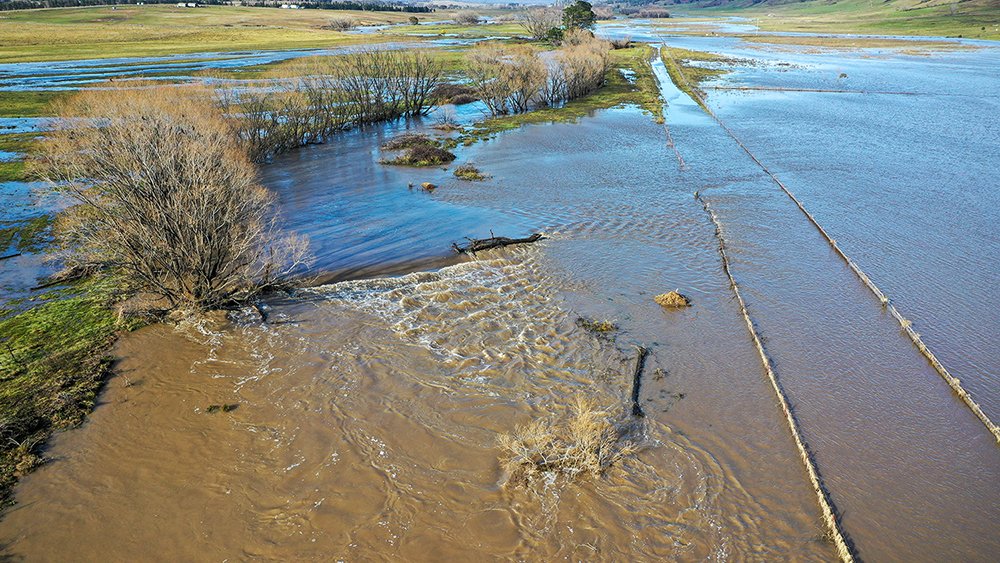Chairman's Autumn Message
As you read this autumn edition of our Resilience newsletter, spare a thought for so many in Australia who have been struggling to literally keep their heads above water, particularly in Queensland and New South Wales. Once more we hear that overused word “unprecedented” in relation to this latest extreme weather event which has caused the tragic loss of lives, property and livelihoods. The recovery will be slow and difficult, and for some they may never regain what they had.
While the work of the Mulloon Institute (TMI) is known for its contribution to substantially enhancing the resilience of landscapes to ever-occurring droughts, it also builds the landscape’s resilience to floods and bushfires.
Flooding generally occurs when there are large amounts of rain over short periods of time and catchments struggle to cope with so much water. As a result, low-lying areas tend to flood first, and as rainfall continues, the extent and the height of the flood increases.
Unfortunately, in most flood prone communities much of the flood mitigation work has tended to be a band-aid solution, such as building levees to protect houses and infrastructure located in low-lying areas. Over many decades, we have seen billions of dollars allocated to such measures, only to witness higher floods rendering levees inadequate. “Build them higher,” comes the natural call from the community.
We need to move our focus away from band-aids and focus on the problem. More often than not, a major problem lies in the degraded catchments which deliver water flows at ever increasing rates. By repairing degraded catchments, the landscape is able to hold substantially more water for longer periods of time which helps reduce flow rates. It’s not rocket science. Reduce the energy of the water, slow the flow, store more water in the landscape, reduce the floods.
Floodwaters at ‘Duralla’ and ‘Palerang’ in August 2020.
Our work at the catchment scale gives landscapes a greater resilience to drought with more water held in the landscape during rain events. These same measures are also demonstrating their value during these very large rain events.
Our counterparts in the UK, like ‘Slow the Flow’, have also arrived at the same conclusion. Instead of building higher levees at the bottom of the catchment where vegetation has been replaced by English villages and intensive agriculture, this organisation works to prevent flooding by building structures like leaky weirs and is replanting vegetation to slow the water flow.
As with our drought resilience work, catchment scale repair has the added benefits of improved environments, increased biodiversity, better habitat for endangered species and more productive agriculture with improved soils and greater ground cover.
When it comes to decisions about being better prepared for the next flood (or drought, or bushfire), I suggest we invest taxpayers’ dollars into work that addresses the problem rather than short-term band-aid ‘solutions’. We need to repair the function of our catchments and landscapes.
Many will see these flooding events as another consequence of a changing climate. There is a strong argument that a properly functioning landscape with a repaired water cycle has a direct and positive influence on the climate. Through our monitoring work on the Mulloon Rehydration Initiative, data is demonstrating climatic differences at the micro level. With a larger repair to the landscape, there is a larger potential to influence the climate.
Finally, considering the current floods, it is very timely that 2022 Tony Coote AM Memorial Lecture will be delivered by the Hon Shane Stone AC QC, Coordinator General of the National Recovery & Resilience Agency. The event will be held at NSW Parliament House on Wednesday 23 March. If you have missed out on tickets, please keep an eye on our social media channels over the coming weeks for a short video recap of the evening.
I trust you will enjoy reading about our catchment scale work currently underway across Australia. As always, I am very grateful for your ongoing interest in what we do and the generous support you provide which allows us to expand our work even further.
Gary Nairn AO
Chairman



